I’m finally finishing the monthly review, following an earlier post that was just about books. This post is about news and awards, short stories, theater, and film.
News and awards
Children’s book author Rick Walton passed away on October 7, from brain cancer. He was 59. His career was discussed in this memorial article.
Jolly Fish Press, an independent publisher based in Provo, UT, has announced that it will be going out of business on Oct. 31, due to financial difficulties. The business was created by publisher Christopher Loke in 2011. It has published over ten books a year in recent years. The announcement on its website read in part, “But even with a collection of note-worthy and great books in our catalog and future lineup, we have not generated sufficient revenues to make the business viable. After a long process of seeking investors who believe in our company and what we aim to achieve, we have, unfortunately, failed to secure the funds necessary to grow and move the company forward.” A Bustle.com article on the closing included many quotes from authors, including some who felt that the company owed them more advance notice before the announcement was made.
Best American Essays, 2016, which was published in October, includes six essays by Mormon authors in its list of “Notable Essays”. Matthew James Babcock (BYU-Idaho). “Boogaloo Too.” Small Print Magazine, Spring/Summer. Joey Franklin (BYU) “The Full Montaigne,” in Ninth Letter, 12:2, Fall-Winter. Lance Larsen (BYU), “Too Many Mysteries to Shake a Stick At”. The Southwest Review, 100:1. Patrick Madden (BYU), “Spit”. Fourth Genre, Spring. Scott Russell Morris (Texas Tech), “Speak English, Please” The Chattahoochee Review 33:1, Spring. It describes a year in which he and his wife teach English in an elite school in Kazakhstan, where they bow to political reality instead of grading fairly. Phillip A. Snyder (BYU), “Rental Horses”. Sport Literate, 9:2.
A Timeless Romance Anthology: All Hallow’s Eve, from Mirror Press, won a 2016 RONE Award, for anthology. The award is given to independent books. Authors in the anthology are Annette Lyon, Lisa Mangum, Elana Johnson, Heather B. Moore, Sarah M. Eden, and Jordan McCollum.
The SLJ Printz Award long list, for a YA award from School Library Journal, has been announced. There are 25 titles, including The Passion of Dolssa, by Julie Berry, and The Serpent King, by Jeff Zentner.
The Serpent King was also one of 110 books nominated for The CLIP Carnegie Medal. The CLIP Carnegie Medal is one of the “UK’s oldest and most prestigious children’s book awards . . . awarded by children’s librarians for an outstanding book written in English for children and young people.”
Comics & Mormons. Exhibit at the BYU Library. August 2016 – March 2017. Harold B. Lee Library’s newest exhibition, Comics & Mormons, documents how The Church of Jesus Christ of Latter-day Saints and its members have interacted with comic arts over the past 70 years.
The library is displaying the most complete copy of Stories of the Book of Mormon, by Phil Dalby. Dalby started this work in 1946 which it is considered to be the first true Mormon comic. It was published in The Church News from 1947 until 1965.
There are also original drawings by Brittany Long Olsen who created Dendo: One Year and One Half in Tokyo, which tells the story of her mission in comic book form and Richard Comely who created the first Canadian super hero comic Captain Canuck.
Along with works by Latter-day Saint artists and authors, the exhibit features the first comic devoted to an all Mormon superhero team in Salt City Strangers and examples of how publishers such as DC Comics, Marvel Comics, and Dark Horse Comics have utilized Mormon characters and theology in their comics.
Visitors to the exhibition are invited to participate. There are electronic art stations where people can try their had at coloring comics and everyone is welcome to create their own art in the gallery visitor book. Comics & Mormons is located on level 1 of the BYU Library in the L. Tom Perry Special Collections. Admission is free.
8 Mormon Web Comics You Need to Read. By Christopher D. Cunningham, Lds.net. Featuring Mormon Shorts, Zarahemla Times, Honest John, Mormon Cartoonist, Beckstrom Buzz, Aww, Feathers!, Pickles, and Gleaners. Also, here is a Deseret Book review of Dendo.
Science Fiction Awards in an Age of Dragons. By Nathanial Givens. Discusses the Hugo Awards, the new Dragon Awards, and debates over speculative fiction awards and the Puppies.
Jana Riess at Religion News Service interviews author McArthur Krishna about the picture book she, co-author Bethany Brady Spalding, and illustrator Caitlin Connolly produced, Our Heavenly Family, Our Earthly Families, The conversation centers around their groundbreaking portrayal of Heavenly Mother.
Short stories and magazines
Dialogue: A Journal of Mormon Thought, 49:2, Summer 2016, is now available. It includes two fiction short stories: “A Laurel’s First-Night Fantasies” by Theric Jepson, and “Kid Kirby”, a 19th century wild west/Mormon yarn by Levi Peterson. There are poems by Dayna Patterson and Ronald Wilcox, and a personal essay by Neil Longo. Reviews of Wm Morris‘s Dark Watch and Other Mormon-American Stories by Jonathan Langford, and David G. Pace‘s novel Dream House on Golan Drive by Eric W Jepson, as well as two reviews of Patrick Q. Mason’s Planted: Belief and Belonging in an Age of Doubt, by Brian Whitney and Brad J. Tharpe, and a review of W Paul Reeve‘s Religion of a Different Color, by Laurie Maffly-Kipp. Also several pieces on “The LGBTQ Mormon Crisis”, and a roundtable of histories and memoirs about The Exponent II.
Steven L. Peck. “Incomplete Slaughter“. Speculative short story, in The Colored Lens, Summer 2016. “What if as a military commander you are ordered to extirpate your former school teachers–your android school teachers? What does it matter? The tenants of your beliefs teach that, despite appearances to the contrary, androids have no consciousness. It’s just like smashing an alarm clock. Right? Who deserves the rights of personhood? And how can you tell if something meets that criteria? And if you are under orders, should you even bother to ask the question?”
Theatre
Javen Tanner. The King’s Men. Rose Wagner Performing Arts Center、Sept. 30-Oct. 15. Sting and Honey Company. Premire of a new play. Story about Shakespeare and his contemporaries in 1603, and features an all-female cast playing both male and female characters.
City Weekly: “Tanner’s prose claims there is no moral or lesson to The King’s Men. However, it’s about perception—how men see women—and vice-versa. It’s an interesting concept; one wrapped up in a delightful and refreshing original story.” Also see a Salt Lake Tribune preview.
Morag Shepherd. Burn. Salt Lake City Avenues Yoga. Sackerson theater company. Avenues Yoga, Salt Lake City. Sept. 30-Oct. 22. Shepherd is the resident playwright at Sackerson. Burn tells the story of Allison, a woman who has recently left her faith and is contemplating leaving her family. The story includes her husband, sister and two daughters, as well as an ex-boyfriend who won’t leave her alone.” Salt Lake Tribune preview.
Morag Shepherd. The Yellow Umbrellas. Bydand Theater Company. A-Frame, Provo, Aug. 25-Sept. 10. “The play follows Cassandra, a young woman who seeks to reconcile her memories of a childhood game that turned to tragedy. This thought-provoking piece focuses on the blame we place on others and ourselves and the power that comes through forgiveness.”
Front Row Reviewers: “Yellow Umbrellas is a great play for those new to abstract theater and abstract connoisseurs alike. While many brilliant abstract works leave the audience with little direction other than despair for the human condition, I appreciate that Shepherd ends the piece with hope, something we desperately need in our world today.”
Melissa Leilani Larson. The Edible Complex. Plan-B, Salt Lake City, Oct. 8. Then a tour of 40 schools in six counties. A play for elementary school children about food and body image. Larson: “Even in the tumult of growing up, when life should be a blissful blur of fruit snacks, library books and kickball games, a child’s value hinges on appearance. On looks, on image. Really? How can a child grow up to be a healthy, functioning human being when society tells him or her what s/he should be and yet, in the same breath, that s/he will never match up? In crafting The Edible Complex, I wanted to deal with those questions: how a child might consider issues touching on body image; and how adults can influence children simply by example. I wanted to use humor and imagination to give those questions resonance, and to tackle them from a new angle.” UTBA interview.
Ellen Fagg West, Salt Lake Tribune. “”Edible” tells the story of a young girl, Anna, played by Anne Louise Brings, who wants to be a chef. She breaks up with her foodie crushes for a time when she realizes that her mother, played by Dee-Dee Darby Duffin, is dieting to lose weight. Part of the fun of the play is that Anna’s favorite foods begin talking to her. Duffin, a former third-grade teacher who now trains other teachers at American Preparatory Academy charter schools, also plays those food voices. In the course of the play, she dons cheeseburger and turkey taco hats, à la samba singer and dancer Carmen Miranda, as well as other food-related costume pieces, all designed by Aaron Swenson.”
Ben Abbott. The BYU/Berkeley Plot. Utah Shakespeare Festival, Cedar City, Oct. 7. One-person show. It earlier played at the Frigid New York Festival, Feb. 22-March 6. The Happiest Medium interview. “Brigham Young University and UC Berkeley couldn’t be more different. They’re the crispy ends of the higher education banana, and Ben Abbott went to both. But while trading Book of Mormon classes for angry protest rallies, he may have stumbled upon a shocking conspiracy linking the two! (Spoiler: It’s aliens.)”
Patty Christena Willis, with music by Mary Lou Prince. Midwife. Producers Club Royal Theatre, New York City, Oct. 14-15. Also played at the Great Salt Lake Fringe Festival in August. A one-woman play with music about Patty Bartlett Sessions, the Mormon pioneer midwife and healer who led an extraordinary life. Willis appears to be a former Mormon, now a Unitarian minister in Utah. Has done a few plays in the past, including several about Japanese themes. She lived in Japan for several years.
Mahonri Stewart. Legends of Sleepy Hollow. Several high school productions, including DaVinci Academy on October 13, 14, 15, and 17, Ogden UT. Venture High School, Ogden, UT, November. Timpview High School, Provo, UT, December. Also a production in Tennessee.
Marc Edward Shaw and Holly Welker, editors. Singing and Dancing to the Book of Mormon: Critical Essays on the Broadway Musical. Rowman and Littlefield, April 26. A collection of essays, including: Gerald S. Argetsinger. “The Book of Mormon Musical and the Cumorah Experience.” Ryan T. Cragun. “‘A Mormon Just Believes’, And So Do Lots of Other People.” Jenn Ashworth. “Faith in Fiction: Creative Practice and the Persistence of Doubt.” Holly Welker. “The Book of Nabulungi: Stand Next to Him and Watch (Or Mostly Him).”
Film
The Last Descent. Sept 16, 2016. Isaac Halasima, director/writer. True story of a man who died in the Nutty Putty Cave in 2009. This is Halasima’s first feature film, he has done music videos and work for BYUtv. The film is independently produced, and distributed by Excel Entertainment. It opened at 17 theaters in Utah, Idaho, and Arizona. Deseret News feature story.
Sean P. Means, Salt Lake Tribune. 3.5 stars. “The moving drama past the headlines of a Utah tragedy to show the life of one man and how he, in life and in death, touched so many others . . . The production captures the claustrophobia inside the cave and the urgency of rescue teams on the surface . . . The look of these scenes is reminiscent of Danny Boyle’s “127 Hours,” another story of a trapped adventurer in the Utah wilds, and it’s to this movie’s credit that it can get similar effects on a microscopic budget. Halasima (a Utah County native who has directed videos for the Provo-launched rock band Imagine Dragons) has a keen eye for evocative, graceful imagery, and he applies that touch to the numerous flashbacks and dreamlike sequences that fill in John’s story outside the cave.”
Scott Renshaw, City Weekly. 3 stars. “Halasima’s fact-based drama still finds powerful moments to make up for the absence of what’s-gonna-happen tension . . . Halasima tries to build a tribute to John’s memory through flashbacks to his childhood and his courtship with his wife (Alexis Johnson), but events above ground often feel thin and unsatisfying. There’s terrific material, though, in the interaction between John and Aaron, a rescue worker who stays with John through the ordeal. The performances in these scenes hit home in their mix of calming small-talk and genuine openness, conveying the kind of relationship that evolves in a crisis. While it’s a worthy goal to make a tragic story focus on the victim’s life, The Last Descent hits emotional high notes by capturing people making peace with the possibility of death.”
Spirit of the Game. Oct. 7. Feature film, written and directed by Darran (J. D. ) Scott. About the basketball-playing missionaries “Mormon Yankees” in Australia in the 1950s. Starring Kevin Sorbo. Purdie Distribution, which worked with Once I Was A Beehive and other recent Mormon films, is distributing it. Darran Scott, 52, the movie’s Australian director, is facing more than 50 charges of child sexual assault, assaulting 15 boys, ages 11 to 15 at the time, between 1990 and 2015, when he coached two junior football clubs in the suburbs of Melbourne, the Sydney Morning Herald reported. Scott, a former actor, previously directed and wrote The Playbook (2013, 2015), a faith-based movie about basketball.
Sean Means, Salt Lake Tribune. 1.5 stars. “Religious devotion and sports fanaticism make for awkward teammates in “Spirit of the Game,” a clunky drama about faith and fellowship . . . Australian writer-director J.D. Scott creates scene after scene of ponderous piety, leavened only by the unintended comedy from the ham-fisted melodramatics (the rival French basketball team literally twirl their mustaches) and the ludicrous staging of the team’s on-court performances.”
Derrick Clements, Daily Herald. C+. “[It] belongs in the category of Mormon cinema that strives more to tell a story about Mormon characters than it does to convey a sermon for The Church of Jesus Christ of Latter-day Saints or to make fun of its peculiarities . . . the movie’s broadness and its prioritization of culture over dogma actually fuels the movie’s surprise weakness: By skipping the sermons in a movie about missionaries, the characters’ motivations are often muddled, and the result is a movie that has plenty of game, but very little spirit.” Deseret News feature story.
Masterminds (was Loomis Fargo). Sept. 30, 2016. Jared Hess, director. Script by Emily Spivey (SNL), rewritten by Chris Bowman and Hubbel Palmer. Stars Kristen Wiig, Zach Galifinakis, Jason Sudeikes, Owen Wilson, Kate McKinnon. Shooting begins in April. It’s inspired by true events and tells the story of a disgruntled bank employee who goes into a life of crime to build a new life with his love. He teams up with his work crush to rob the place of $20 million, leaving a trail of evidence that is as obvious as snail tracks. The film was stuck in legal limbo for a long time, as the studio, Relativity, went bankrupt in 2015, just before the film was first slated to be released.
Rotten Tomatoes: 43% fresh. As of October 16, three weeks into its run, Masterminds has grossed $16.2 million in North America and $3.2 million in other territories for a worldwide total of $19.4 million, against a budget of $25 million. Not a big hit, but Jared Hess’ most successful film since Nacho Libre.
AV Club: C-. “As a filmmaker, Jared Hess (Napoleon Dynamite, Nacho Libre) has always taken special delight in turning his actors into mortifying cartoon dorks. As an actor, Zach Galifianakis has played almost nothing but mortifying cartoon dorks. With Masterminds, these cringe-comedy connoisseurs join forces for the first time, and the character they come up with together crosses the line from amusingly pathetic into seriously, detrimentally unappealing . . . He’s a disgusting dimwit bumpkin who makes Napoleon Dynamite look like Don Draper. Unfortunately for the movie, he’s also our rooting interest and the romantic lead . . . Owen Wilson’s presence here, planning an ill-fated heist, creates unflattering echoes of Bottle Rocket—just the latest ammo to use against a director who’s been labeled a lowbrow Wes Anderson imitator from symmetrical composition one. Hess, to put it kindly, lacks Anderson’s supreme formal control, but the two do share an affinity for prop-based visual gags, and what few good laughs Masterminds scores are of this cosmetic nature: an oversized bowl of taco salad served as a romantic gesture, a CD jacket worn like an iPhone armband, etc.”
Variety: “[A] legitimately funny movie co-produced by “Saturday Night Live’s” Lorne Michaels and starring nearly the entire new “Ghostbusters” squad . . . As in “Napoleon Dynamite,” Hess and his team waste no opportunity to potentially earn a laugh, from costumes to props to wallpaper to hairdos. This sometimes leaves a scene feeling forced and overcrowded (as when Galifianakis walks on screen wearing a white tuxedo and camouflage-print cummerbund), but other times lands like the cherry on top of an already hilarious sundae (driving off in a run-down pickup truck with a makeshift plywood gate where the missing door should be) . . . Working to the advantage of Hess and his screenwriting trio (Chris Bowman and Hubbel Palmer, with “SNL” vet Emily Spivey), the weirdest aspects of this story simply couldn’t be invented, putting “Masterminds” in that same credibility-straining zone as Jim Carrey con-man comedy “I Love You Philip Morris” and the Coen brothers’ “Fargo”. Like both of those films, extreme regional accents serve to heighten the comedy (Sudeikis may as well be channeling former North Carolina resident — and executive producer — Danny McBride), while underscoring the characters’ ignorance. Still, it’s this improv-ready ensemble’s wit and Galifianakis’ own gift for physical humor that account for most of the laugh-out-loud moments, heightened by silly flourishes so eccentric (an assassin whose weapon of choice is an Alamo-era musket, a nose-whistling FBI informant resentful of his nouveau-riche neighbors) they could only be found in a Jared Hess movie.”
New York Times: “The results are mixed. This isn’t necessarily because the movie is finally seeing release after spending more than a year in the vortex of the bankruptcy of its studio, Relativity. The director, Jared Hess, actually completed and saw the release of another feature (“Don Verdean”) since completing this one. Mr. Hess, whose other output (“Napoleon Dynamite,” “Gentleman Broncos”) has been more determinedly eccentric, reins in his approach for a nevertheless consistently outlandish retelling of the North Carolina Loomis Fargo robbery of 1997, nicknamed the Hillbilly Heist on account of its perpetrators’ social status. Not to mention their lack of, let’s say, nuance . . . The full-on goofiness is not reliably buoyant; this is an intermittently enjoyable but often choppy comic ride.”
Matt Seitz, RogerEbert.com. 3 stars. “If smart dumb comedies hold a place in your heart, you’ll like “Masterminds.” . . . Jared Hess, American cinema’s second most distinguished practitioner of smart-stupid comedy after the Coens. This film is much bigger, broader and lighter than his usual and lacks his characteristic molasses-slow buildups and a certain spiritual quality; but visually and tonally it’s in his wheelhouse.”
Sean Means, Salt Lake Tribune. 3 stars. “Hess’ sense of humor runs toward the goofy, and here his talented comic cast runs with that and makes the most of it. Galifianakis, Wilson and Sudeikis are all funny, but it’s the women — particularly Wiig and her “Ghostbusters” stars, McKinnon and Jones — who get the most sustained laughs. “Masterminds” may be as dumb as its characters sometimes, but it’s a good, entertaining kind of dumb.”
Singing With Angels. March 11. Brian Brough, director. Brittany Wiscombe, writer. Stars Sarah Kent (The Cokeville Miracle) and Scott Christopher (Best Two Years). A woman joins the Tabernacle Choir. It played in intermountain state theatres for a series of screenings and short runs in March, then had another run in theaters in September.
Sean Means, SL Tribune. 2.5 stars. “Aubrey Larson (played by Sarah Kent) is a five-year member of the venerable choir who must make a crucial life decision: whether to leave the choir and uproot her family to move from Utah to Arizona, where her mother-in-law (Anne Sward) is facing a recurrence of cancer. Aubrey reflects, through flashbacks, on her time with the choir, particularly when music and her faith saw her through hardships — including her daughter (Bailee Michelle Johnson) suffering a ruptured appendix just before Aubrey’s audition, or her husband, Jason (Scott Christopher), losing his job right before the choir’s tour. The melodrama of Brittany Wiscombe’s script, as obstacle after obstacle is placed in Aubrey’s path, gets a bit heavy-handed. (With minimal rewriting, this could be a horror movie about a woman to whom a series of calamities happens when she joins the choir.) Where Wiscombe and her brother, director Brian Brough, succeed is in detailing the behind-the-scenes mechanics of the Mormon Tabernacle Choir, which granted filmmakers access to its music library and rehearsal space, and re-enacting heartwarming stories of how the choir has touched audiences around the world.
Josh Terry, Deseret News. 2.5 stars. “There are some nice moments along the way, but there isn’t enough conflict to allow “Singing with Angels” to get real traction. Since we already know Aubrey will join the choir, much of the tryout process feels more instructional than engaging, and though the early vignettes are related, they feel disconnected, like a meandering walk down memory lane. It isn’t until the third act that Brough’s film lets go of its heavy nostalgic tone and really finds its stride. A surprising late twist introduces some powerful dramatic conflict, bringing the narrative together and helping “Singing with Angels” finish on a strong and uplifting note. The big attraction for most viewers will be the depiction of the Mormon Tabernacle Choir, and many will be happy to know that choir music and members are used throughout the film. The depiction of the tryout process is pretty thin and serves more as a setup for the film than its focus. Often, the emphasis is placed more on the peripheral experiences of being in the choir rather than creating a live concert on screen. But as much as the choir is used as the selling point of “Singing with Angels,” the film’s real focus is on the family at its heart. And of that material, the biggest surprise in the film might be the poignant relationship between Aubrey and her mother-in-law, which elevates beyond simple two-dimensional humor and grows into something genuinely moving.”
Court Mann. Daily Herald. “The new film has significant flaws. There’s a strong chance those flaws — awkward and somewhat rigid acting, telegraphed moments of emotion, an overall aversion to risk — are simply rooted in its amateur nature. Most smaller-scale, lower-budget movies of this kind face similar problems, after all . . . Aubrey is portrayed as a good wife and mother who never really loses her cool. As a viewer, though, I sort of need Aubrey to lose her cool. She’s never all that happy, never all that frustrated, never all that affectionate for most of the film. This feels like a missed opportunity. Having an emotionally stunted lead could be compelling, especially given the story and the LDS culture in which it resides. But the script and performances never acknowledge Aubrey’s obvious drawbacks. Is her awkwardness intentional or not? If it was intentional, it doesn’t play off that way. I’m torn. There’s a scene in the film’s final third where Aubrey’s emotions finally blossom (or burst). It’s striking — actress Sarah Kent really nails it. But there’s more to it than that. It’s also striking because it’s so dissimilar to what we’ve seen of her (or anyone) to that point. Her performance is uneven, and most of her co-stars are far too even. That rigidity, that commitment to play nice, doesn’t just hold “Singing With Angels” back. It holds LDS culture back too. Trials and tragedies are messy things. They don’t fit tidily into our lives, our sense of self, our relationships. “Singing With Angels” doesn’t sink its teeth into that like it could have.”
The Next Door. Short film (35 minutes), directed and co-written by Barrett Burgin. It had screenings in September and October at the Salt Lake Art Center. Derrick Clements, Daily Herald. “”The Next Door,” carries an obvious self-awareness and thoughtfulness about Mormon cinematic history — while also staking out a completely fresh new take on it. It’s about Mormon missionaries who take on the “investigator” role themselves when someone they teach disappears. It’s a neo-noir film about Mormon missionaries . . . The film “gives a grittier, less overtly faith-based approach to Mormon cinema,” said co-writer Jarom McDonald in an email. But the film is also far from being critical of the faith. Like Dutcher’s work, “The Next Door” has both feet fully planted in narrative storytelling — not proselytizing — but its heart feels fully, faithfully Mormon . . . With how much the film reflects on a long Mormon cinematic heritage, the biggest surprise of “The Next Door” is not the neo-noir twists and turns of the story — it’s that Burgin is 22 years old, a sophomore at Brigham Young University, originally from Knoxville, Tennessee. Over half of the team that put the film together are also students.”
Steve Evans, By Common Consent. “Overall it’s a good film and worth watching. It is not easy to make a movie about missionary work that places a premium on creative narrative storytelling; the temptation is probably very strong to let devotional themes overwhelm everything else. Burgin has done a very good job here in that respect.”
“Last Chance U: is this the best sports documentary series of all time?” (The Guardian). “It’s important that I put Last Chance U into context here. I do not like American football. I do not understand American football. The college football system is the most bafflingly arcane thing of all time. And yet Last Chance U might be the best sports documentary series I have ever seen . . . As interesting as the players – with their assorted ambitions and desperate backstories – are, the true stars of the show are the two figures tasked with maintaining the ridiculous highwire act between sport and academia. . . . I was absolutely gripped. Especially during the match-day sequences, director Greg Whiteley knows exactly when to slow the action down, when to cut away to a furious coach or a fretting spectator, when the music should swell with expectation and when it should dissolve away to nothing. It’s handled so expertly that even a non-fan like me can understand the stakes. Each win is giddying. Each loss hurts. The end of the series is nothing less than Shakespearean. This is a show about obsession, and it is very, very easy to get swept up in.”
15-year anniversary DVD re-release of The Other Side of Heaven. Feature article by Derrick Clements, Daily Herald.
Boston Hassale review of I am not a Se
The 1931 Book of Mormon movie Corianton: A Story of Unholy Love had a screening at BYU’s Museum of Art in Provo on October 6.
BYUtv has greenlit sci-fi series “Extinct,” hailing from “Ender’s Game” author Orson Scott Card and writer Aaron Johnston. “Extinct” will be produced by Adam Abel (“Forever Strong”) and directed by Ryan Little (“Outlaw Trail”). “Extinct” marks BYUtv’s second scripted series, following “Granite Flats.” BYUtv has ordered 10 episodes with the first season slated to premiere in 2017.
Information for the next LDS Film Festival, to be held March 1-4, at the SCERA in Orem, has been announced.



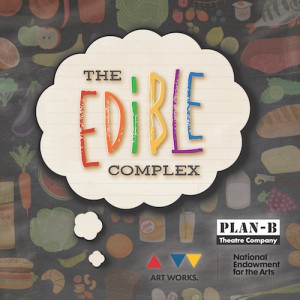

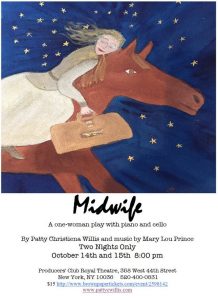
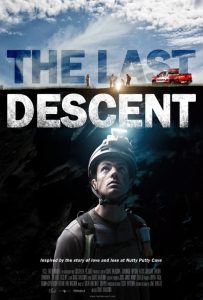
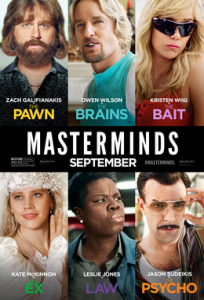
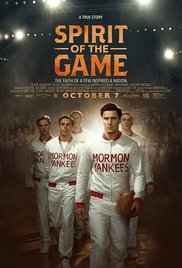
.
Good stuff. Nice to know what’s to know. I didn’t this month, clearly.